Assignment 4: Delft Bicycling Facilities: Anthony Green
Cycle Tracks
Site 5
Site 6
Site 10
The design of the cycle tracks in sites five, six, and ten were effective for a couple reasons – the degree of separation from moving vehicles and the utilization of two-way traffic. In my opinion the relationship between perceived cycling safety and separation from motor vehicles is directly proportional, so I felt quite comfortable on these cycle tracks. In a few cases (like the shopping center along site six) I probably would have used the track as a two-way track even if it were one way so that I could quickly travel from shop to shop in either direction. So, I was satisfied to see that engineers had foreseen this scenario and planned for it accordingly. The fact that cars yield to cyclists when the track crosses a street added to my comfort level. The intersection with a raised crossing added a few additional safety improvements: cars were required to cross the cycle track at a complete right angle (since the track bowed out at the intersection) which makes it easy for the driver to see cyclists coming from either direction, and cars also received a visual queue that they were passing into a cycling space (represented by the red pavement from the cycle track passing all the way through the intersection).
I think this type of facility does provide a comfortable and pleasant experience for the cyclists, but the same degree of safety probably could have been achieved with just using a curb for vertical separation instead of the line of trees. Although this would not lend itself to quite as much horizontal separation, I believe that it would be sufficient since drivers here seem to be quite aware of cyclists and since the speed limits on these roads were reasonably low. With that being said, I don’t think that substituting the line of trees for any other form of separation would provide the same pleasantness. In my eyes, the expense of this facility is worth it for the user experience provided.
Bike Lanes
Site 1
Site 2
Site 4
Obviously, the most advantageous part of a bike lane is the inexpensive nature – workers need only apply some paint to the side of a road. In this case, I believe that the cheap price comes at the cost of a generally uncomfortable ride. Stop four had the least traffic of the bike lane sites and wasn’t all too bad, but sites one and two were significantly busier. As the traffic increased, I felt myself tending to ride faster as cars whizzed by me. I generally felt unsafe due to closer proximity to moving vehicles. In addition, this facility allows drivers to impede the flow of bicycle traffic through illegally stopping in the bike lane, which is shown above. The one positive that I drew from the busier bike lane sites was the seamless intersection at site two. It allowed cyclists to make any desired turn with ease. Depending on perspective, this intersection could also be perceived as a negative since the nature of this intersection required cyclists to be thrust out into traffic. From this point I think it is easy to see that the preferred method is to keep cyclists on a cycle track and not intermingled with motor vehicles.
I’m somewhat torn on this facility. I do think that it provides a decent amount of protection and drivers did generally seem to respect the bike lanes as off-limits to them. But, it still does leave the door open for rogue rule-breakers to stop in the bike lane. Additionally, I strongly believe that this facility should only be used on roads with very low motor vehicle throughput as I felt myself become more stressed out as traffic volume increased.
Bike Boulevard
Site 3
Site 7
Stops three and seven were nice and peaceful. Both were either very low traffic or no traffic areas next to canals, which I really liked. Vehicles could pass through Buitenwatersloot but the traffic was so low that I was able to ride where I wanted essentially the whole time. Thus, it didn’t matter that the street was partially unmarked. Stop three had some parked cars along the way and I saw a lonely car or two navigating the path, but other than that cyclists were freely roaming the beautiful pathway by the canal. With this addition of space, cyclists were able to spread out and explore the entire path. I saw people comfortably riding 3X3 or even 4X4 on occasion. Cyclists seemed much less like they were on a journey from point A to point B, and much more like they were enjoying a nice bike ride and conversation with their friends.
This facility is only a slight step above the “do nothing” approach to bike facilities, so it doesn’t involve much design or cost. With that being said, these areas were my favorite in terms of rider experience. I found them very relaxing and I pedaled along slowly and happily in the absence of road traffic.
Advisory Lanes
Site 8
Site 9
Site 11
These facilities can be perfectly functional in areas with low traffic volume. The volume that I saw when riding around sites eight and nine was probably somewhere around 2000-2500 ADT (rough estimate off the fact that 2000 ADT is one car every 18s) and I felt perfectly comfortable riding around these sites. Since it was a residential area, cars were rightfully driving slowly while being quite mindful of the many cyclists that were around the area. The lack of centerline didn’t seem to matter much since I didn’t see any conflicts with two cars and a cyclists crossing the same point at the same time. Although site nine was rather narrow, I didn’t have much of a problem navigating the area with low stress.
In contrast to these two sites, I found site eleven to be much too busy. The high car throughput caused quite a few situations where there were two cars and a cyclist trying to cross the same point at the same time. This conflict caused traffic jams. The added traffic volume also added a little stress and sense of urgency to my ride, which I did not enjoy. Having this experience after the first two advisory lane sites confirmed my thoughts that these facilities would only be effective in areas with low ADT.
Low cost is a major positive for this facility, but unlike the bike lane I did not see any negatives to this inexpensive facility when I used it. The design can hardly be called a design since it is merely the addition of paint to a road, but the implementation in correct areas is one of the most cost effective of all the facilities.
As an aside, I think it is interesting to note that, in my experience biking around Boston, this facility would probably not work whatsoever in the US. Dutch drivers are much more immersed in bicycle culture than US drivers and I think that influences them to be much smarter and aware of bicycles and much less angry than their counterparts in the states. After all, most Dutch drivers are cyclists themselves! If this facility were used in Boston, I would expect that drivers would absolutely not respect the boundaries of the cyclists and essentially do whatever they wanted because most drivers in Boston are not cyclists, and thus they do not have the same cycle-friendly perspective that most of the Dutch have.
Bike Highway
Site 14
Although we only traveled on the bicycle highway for a short distance, I got a good feel for this type of cycling facility. Most of our ride was completely separated from motor vehicle traffic. In fact, for this time I couldn’t even see or hear a car at all. This made me feel safe and put me in a great mood. I felt as if I was going on a leisurely cruise through nature with no worries, and other cyclists around me seemed to share the same sentiment. The one time that our paths crossed with motor vehicle traffic, the designers of this path instead chose to use a tunnel under the road to avoid any potential conflicts at all. The safety and overall ride quality provided by this facility is certainly unmatched by the others.
The main point of expense here was the bike tunnel going underneath one of the intersections, and I believe that that expense is completely necessary. The highway that we would have intersected has cars traveling at very high speeds, and Dutch road regulations prohibit bicycles from such motorways, so the tunnel was necessary to comply with the law.

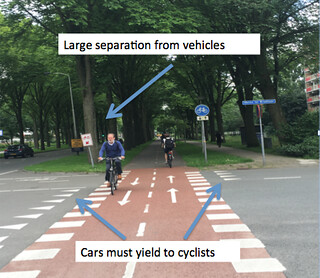
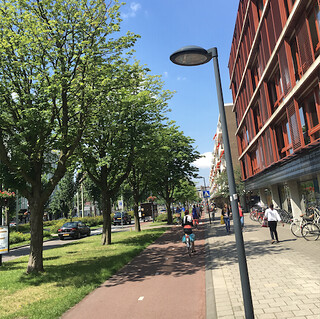

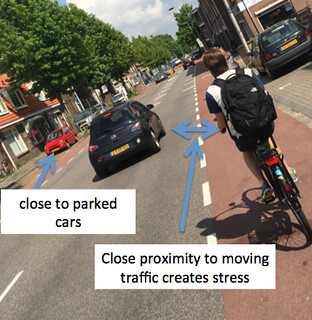

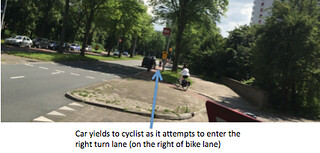
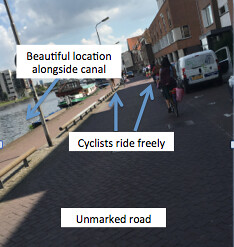
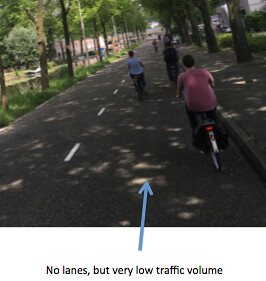


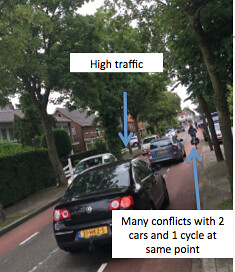
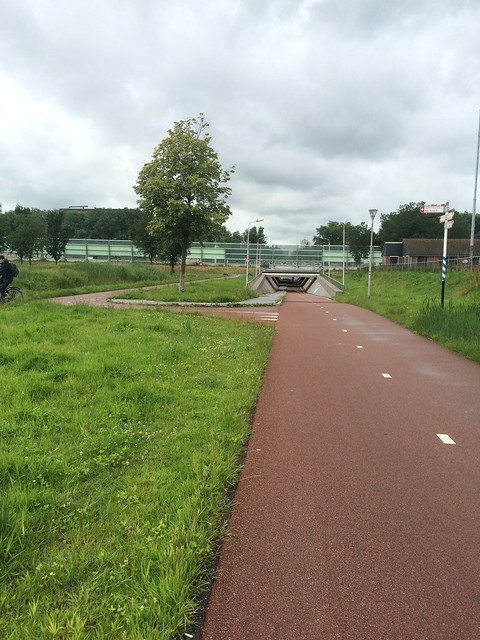
Leave A Comment